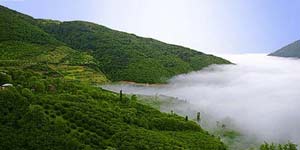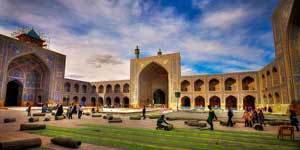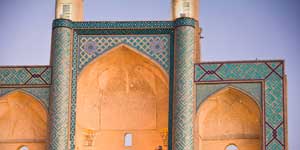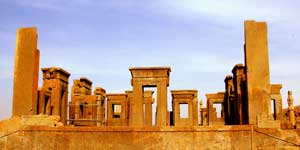Iran Birdwatching Tour – Relaxed Itinerary with Extended Stays
This birdwatching tour is designed to provide a more relaxed experience, with fewer locations but longer stays at each destination, allowing for deeper exploration of Iran’s diverse bird habitats. Enjoy a more leisurely pace, giving you ample time to observe the local wildlife and take in the surrounding natural beauty.
Day 1: Arrival in Tehran
-
Arrival at Tehran International Airport.
-
Transfer to your hotel in Tehran and relax after your journey.
-
Evening: Optional birdwatching at Lavizan Forest Park near Tehran, where you can spot local species such as Eurasian magpies, common blackbirds, and sparrows.
-
Overnight: Stay in Tehran.
Day 2-3: Alborz Mountains – Northern Tehran
-
Morning (Day 2): Depart for a 2-day stay in the Alborz Mountains, just north of Tehran.
-
Explore high-altitude forests and rocky cliffs, home to species such as the Persian wheatear, red-fronted serin, and golden eagle.
-
-
Afternoon: Visit nearby valleys and streams to spot mountain birds like rock bunting, alpine chough, and white-throated dipper.
-
Day 3: Continue birdwatching in the Alborz region. Visit other parts of the mountains to increase your chances of spotting more elusive species.
-
Overnight: Stay in a mountain lodge or a nearby guesthouse, with comfortable accommodations to maximize relaxation between birdwatching sessions.
Day 4-5: Golestan National Park – Northeastern Iran
-
Morning (Day 4): After breakfast, travel to Golestan National Park, one of Iran’s oldest and most significant national parks, for a 2-day stay.
-
Golestan’s diverse ecosystems, including forests, wetlands, and mountains, provide excellent birdwatching opportunities. Key species include golden eagle, northern goshawk, Persian partridge, and various woodpeckers.
-
-
Afternoon: Visit nearby rivers and streams to observe wetland birds, such as grey herons, common spoonbills, and white storks.
-
Day 5: Spend the day exploring more of Golestan’s natural beauty. The park is also home to a variety of mammals and lush forests, making it perfect for a peaceful yet rewarding birdwatching experience.
-
Overnight: Stay at a comfortable eco-lodge or traditional guesthouse within Golestan National Park, immersing yourself in the park's tranquil atmosphere.
Day 6-7: Khuzestan Wetlands – Southwestern Iran
-
Morning (Day 6): Travel to Khuzestan Wetlands for a 2-day stay. These wetlands are a crucial stop for migratory birds, especially during the winter months.
-
Visit Hoor al-Azim Wetland and Shadegan Marsh, where you can spot Dalmatian pelicans, flamingos, great egrets, and cormorants.
-
-
Afternoon: Explore the wetlands for more waterfowl, such as common teal, northern pintail, and greylag goose.
-
Day 7: Continue birdwatching in Khuzestan, taking time to photograph and observe species in this rich wetland habitat.
-
Overnight: Stay in a local guesthouse in Ahvaz or a nearby town, allowing for a restful evening after a full day of birdwatching.
Day 8-9: Caspian Sea Coast – Northern Iran
-
Morning (Day 8): Head north to the Caspian Sea Coast for a 2-day stay. This coastal region is home to a diverse range of bird species, particularly in the wetlands.
-
Look for Eurasian spoonbills, red-necked grebes, little grebes, and waders along the shoreline.
-
-
Afternoon: Explore the Caspian Hyrcanian forests, a UNESCO-listed natural heritage site, for woodland species like woodpeckers, nuthatches, and spotted flycatchers.
-
Day 9: Spend the day birdwatching in the nearby wetlands and forests, enjoying the relaxed atmosphere of the Caspian coast.
-
Overnight: Stay in a coastal hotel or a charming guesthouse, with a view of the Caspian Sea.
Day 10: Return to Tehran and Departure
-
Morning: Return to Tehran by flight or road, depending on your preference.
-
Afternoon: Free time for last-minute sightseeing or shopping in Tehran.
-
Evening: Transfer to Tehran International Airport for departure.
Key Species to Expect
-
Raptors: Golden eagle, Persian eagle, northern goshawk, and white-tailed eagle.
-
Waterfowl: Flamingos, Dalmatian pelican, swans, common crane, and various ducks.
-
Wetland Birds: Grey heron, spoonbills, cormorants, and various shorebirds.
-
Passerines: Eurasian magpie, Persian wheatear, woodpeckers, and red-fronted serin.
-
Coastal Birds: Osprey, kingfishers, and seabirds along the Caspian Sea coast.
Best Time to Visit
-
Spring (April to June) and Autumn (September to November) are ideal for birdwatching in Iran, especially for observing migratory species passing through the country.
This tour offers a more relaxed pace, focusing on a few key locations with extended stays, allowing you to fully immerse yourself in the birdwatching experience while enjoying the natural beauty of Iran’s landscapes.












 > Shiraz >
> Shiraz >  > Isfahan
> Isfahan












